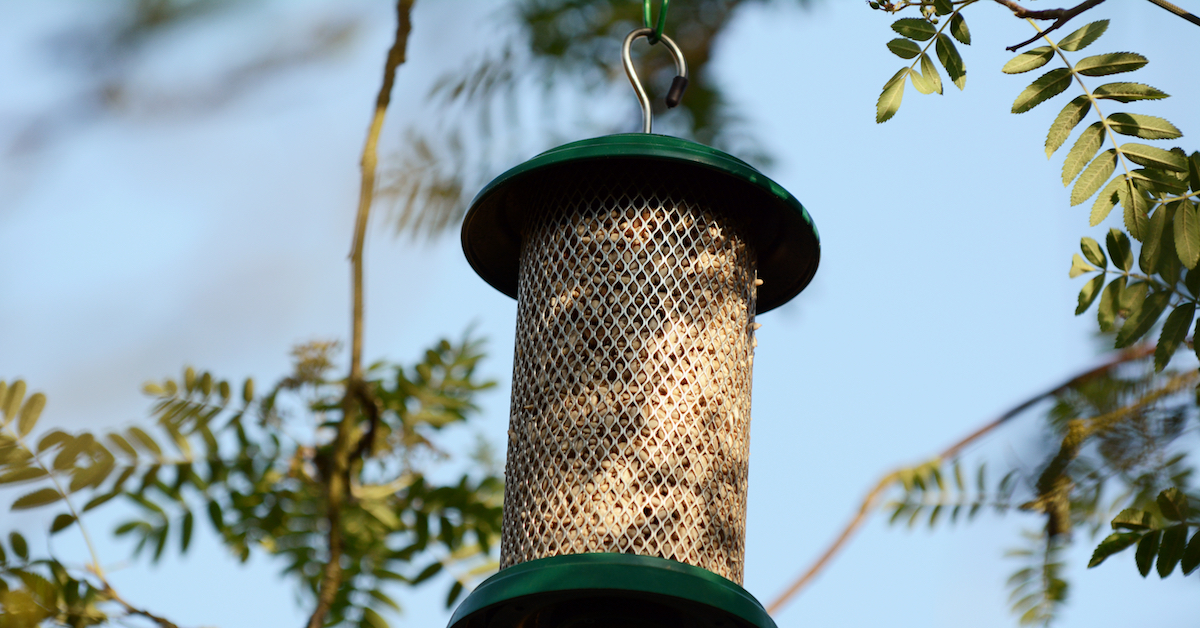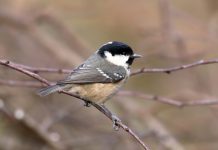Birds love to snack on sunflower seed hearts even more than we humans do. And for finches, blackbirds, starlings, thrushes, siskins and even robins, the high fat and protein content are just what they need to see them though the winter months.
Here we take a look at what makes sunflower hearts such a great way to feed wild birds.
What is a sunflower heart?

Image: liza scott 2
Feeding birds only the kernels of sunflower seeds – the hearts – saves dealing with husks littering your garden. It also resolves that other problem: birds seeding your lawn and borders with sunflowers – in fact de-husked sunflower seeds are very unlikely to germinate.
Because birds gulp down the sunflower hearts without first having to crack open the shells, they’re also less likely to drop them on the ground, reducing the chances of rats and other vermin coming to feed and set up home on your property.
What are the benefits of sunflower hearts?

Image: Lu Lovelock
Sunflower seeds are packed with fat and protein which are particularly hard for birds to come by during the cold winter months. The high fat content also means the seed kernels have a calorie to weight ratio that’s hard to beat. Put simply, birds don’t have to eat as many of them to keep themselves fueled up to beat the cold. And, when breeding season arrives, they provide a timely boost of energy to help birds raise their chicks.
Just like humans, songbirds need to eat a varied diet rich in vitamins and minerals; sunflower hearts are a healthy option for both us and our feathered friends. As well as being high in vitamin E they contain the trace elements, copper, manganese and selenium – all great for keeping birds in good condition from beak to tail feathers.
Do remember to offer a good bird seed mix, or put out different seeds at different times. Otherwise, because sunflower hearts are so fatty, birds may go for them at the expense of other seeds, missing out on the benefits of a wide range of nutrient sources.
What birds do sunflower hearts attract?

Image: Martin Fowler
Want to attract a wider range of birds to your garden? Sunflower hearts are a great option because unlike shell-on seeds which only hard-bill birds like finches can open easily, with the husk already removed, soft-bill birds like robins can also get in on the feast.
The list of birds that are partial to a hulled sunflower seed is a long one indeed. It includes:
coal tits, blackbirds, dunnocks (hedge sparrow), blackcaps, blue tits, chaffinches, wood pigeons, collared doves, starlings, thrushes, robins, siskins, finches and house sparrows, to name but few.
How long do sunflower hearts last?

Image: Sarah Marchant
Stripped of their hard protective shells, sunflower hearts will go bad after a time and the fat in the seed kernel will turn rancid. To prevent your seeds making visiting birds unwell, it’s best to only put out a day or two’s worth of feed at a time, making sure to clean up any spills. Do also remember to wash your feeder regularly with a specialist cleaner.
You can help to keep your sunflower hearts in good edible condition by presenting them in a sunflower seed feeder which keeps them nice and dry. Also consider investing in a squirrel proof feeder or your seeds won’t last long at all; squirrels love sunflower hearts.
Sunflower hearts are a healthy, nutritious feed for wild birds, packing a nutrient-rich calorie dense punch just when songbirds need it most. Best of all, they’re a great way to avoid the mess and waste associated with hull-on seeds.
How do you attract birds to your garden? Leave us a comment below and share your photos over on our Facebook page. We love to hear from you!
Lead Image: TasfotoNL


























